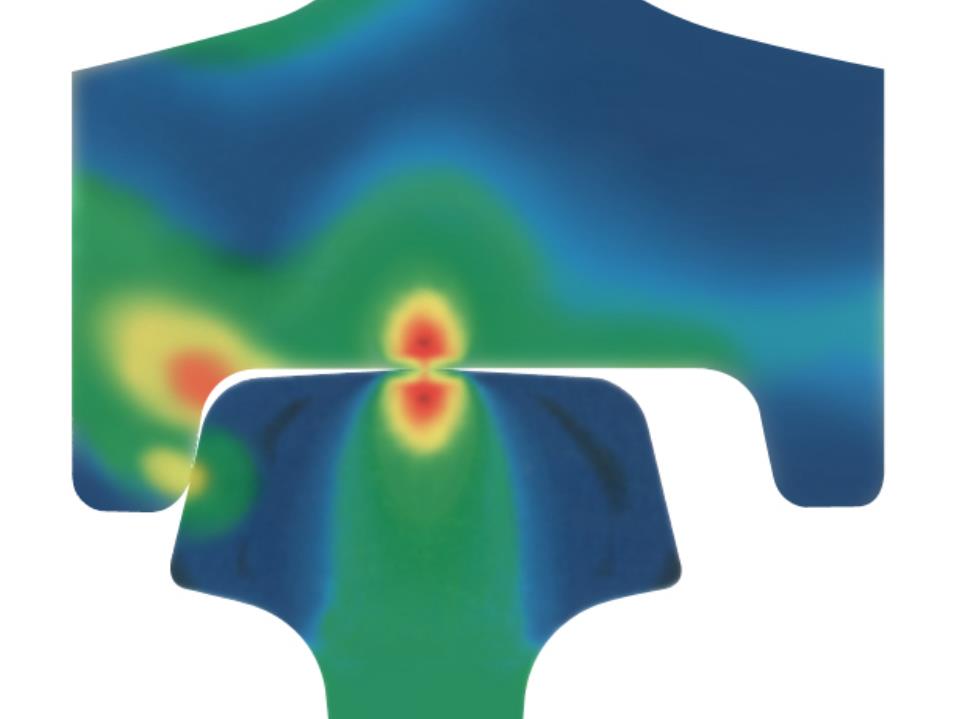 The stress map above shows the effects of wheel/rail interface including wear, breakage, and spalling
The stress map above shows the effects of wheel/rail interface including wear, breakage, and spallingIndustrial wheels are used to move heavy loads in a wide range of industries including forestry, wood processing, mining, and manufacturing. Buying and maintaining wheels can be a major expense, especially in challenging and demanding applications. Using the right type of wheel for the job is essential, and wheel hardness can offer major benefits in ensuring a longer service life. But the wheels are not the only consideration. When upgrading wheel hardness, there is often a concern about how rail life will be impacted.
As a leader in the development of industrial wheels, Xtek has extensive experience with the engineering issues involved in industrial wheel and rail applications. This experience includes field research into the impact of wheel hardness on rail life. To fully understand wheel and rail issues it is useful to begin with a look at the Xtek approach to wheel development.
Xtek crane and track wheel assemblies have an excellent safety and service life record throughout a broad range of industrial applications. Xtek metallurgists and engineers have perfected the Xtek TSP contour hardening process, which offer the benefits of higher load compacity and reduced maintenance, in addition to superior levels of safety and dependability. Xtek forged steel wheels fabricated using our TSP contour hardening process feature ductile core properties backing up a 58-62 HRc hardened flange surface profile. The benefits include:
- Wear resistant wheel tread and flange for longer, safer life
- Absorbed shock loads, vital for wheel flange toughness
- Assists in the prevention of spalling and pitting
- Higher load capability results from heat-treatment placing wheel tread and flanges into compression
While Xtek had considerable experience and understanding of the effect of hardness on the wheel itself, for years no test data had been available for evaluating hard wheel / soft rail combination. As a result, there was significant concern among prospective users about the impact of switching to a harder wheel. Users feared that a hard wheel might act as a tool and actually cut into the soft rail. In 2008, Battelle and Xtek performed material testing to determine the difference in the wear characteristics for hard and soft wheels on control cooled rail materials.

The data demonstrated that switching to a 56-62 HRc wheel improves both wheel and rail wear. However, if using hard wheels, it is imperative that all wheels on the same rail are hardened, as the following cautions demonstrate:
- Do not mix the hard and soft wheels on the same rail
- While hard wheels will not damage a soft rail, using a soft wheel in tandem with the hard wheel may cause rail deterioration
- As the hard wheel flattens the disparities in the rail on a micro-basis, a soft wheel will re-create the disparities in the rail
- The hard wheel will then come back over the rail and flatten the new disparities, causing further wear in the rail
To learn more about the benefits of forged steel TSP hardened industrial wheels, contact the wheel specialists at Xtek.
